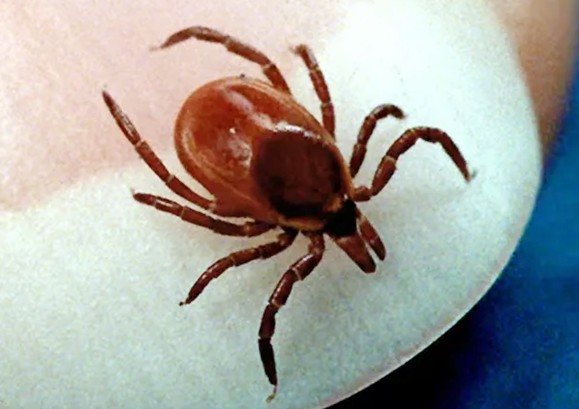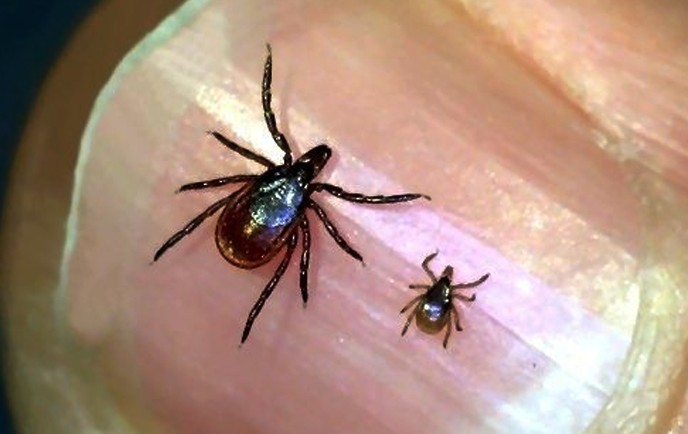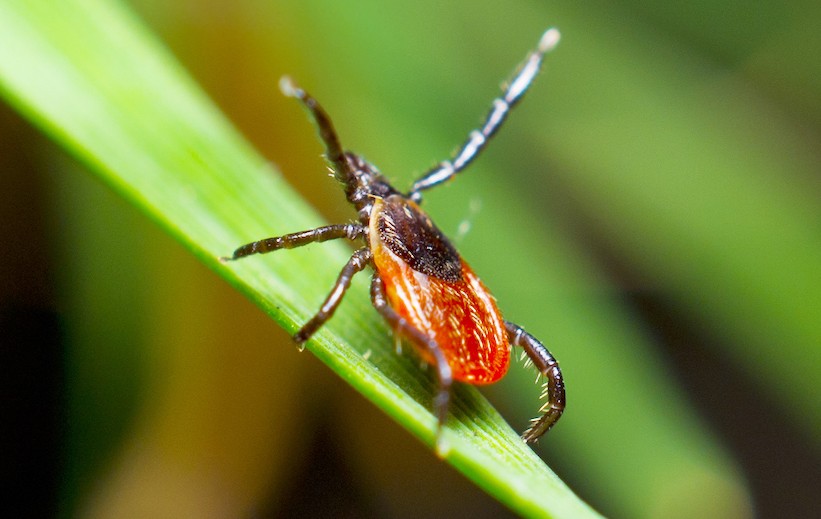Deer Tick
The mere mention of Lyme fever strikes fears in some people’s hearts. This is because the disease can come with different symptoms and be quite distressing. If you have heard of Lyme fever, the likelihood is that you may be familiar with Deer tick, especially if you are from areas where they are endemic.
What is a Deer Tick?
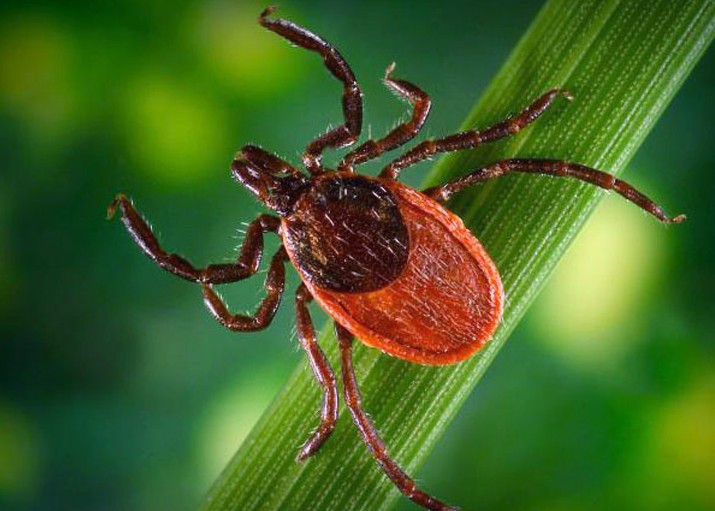
Picture of a deer tick
Deer ticks otherwise known as Ixodes scapularis, are small, chelicerate arthropods with relatively hard bodies. They are mainly found in the United States, especially in the Northeast, Midwest and Southeast regions. They are also found in Canada, several European countries and a few Asian countries.
What does a deer tick look like?
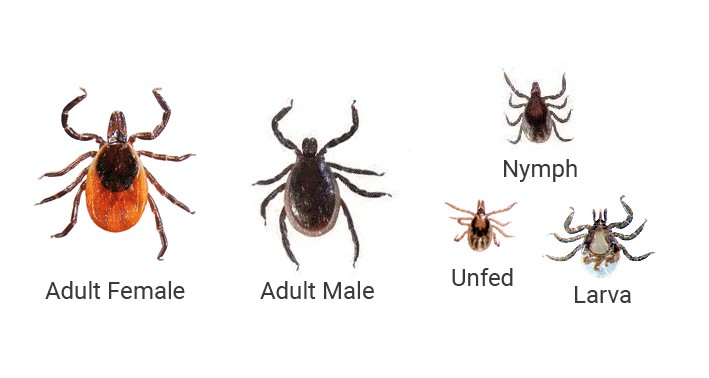
An adult male deer tick is about 2.4 mm – 2.8 mm long while the female is 3.0 mm – 3.6 mm and they are dark brown to black in color. The larvae and nymphs are quite smaller when compared with the adults. However, after they are fed and fully engorged, the females can be as much as 11 mm long.
They generally have black legs. Hence they are also known as ‘black-legged ticks’. The adult females are usually bright red, with their front parts covered with black scutum. The males, on the other hand, have a dark blackish color since their entire bodies are covered with the scutum.
The deer ticks lack eyes and can’t easily locate their hosts. Rather they depend on special organs known as Haller’s organs, close to the tips of their front pair of legs, to identify their potential hosts. The Haller’s organ also serves for detecting temperature, humidity, odor and carbon dioxide.
The head and mouthparts of the deer tick are together referred to as gnathosoma. The mouthparts taper towards the front and are usually black. They are made up of a palp on each side, which helps in guarding the hypostome situated in the center. The hypostome is an appendage that is barbed and shaped like a needle. Its main function is to pierce the host’s skin and suck its blood.
Behavior and Eating habits
Deer ticks practice a behavior known as “questing” in all their three stages of life. At the ripe time to locate a host for a blood meal, the tick simply climbs to the top of the surrounding leaves or vegetation and wait with their forelegs hanging out. As soon as a potential host brushes past the leaves, the tick quickly grips it and then climbs unto the host to locate the warm areas of the body (mostly the armpits, groins, inside the ears, the knees, hairs and the belly buttons).
Deer ticks have a lifespan of two to three years and usually enjoy three blood meals during the period. A nymph enjoys its second blood meal in the spring and summer of its second year. They are able to get a good grasp of the skin by inserting their mouthparts into the skin just like a corkscrew. Their meals are completed in about five days.
Health risks
The greatest health risk associated with deer tick is the Lyme disease. The little creature is able to transmit the disease in its course of feeding on the blood of its host. When fully developed, Lyme disease is capable of causing neurological problems, arthritis, paralysis, chronic pains, numbness of the feet and hands, tingling sensation, etc.
However, it must be noted that ticks don’t easily transmit Lyme disease. For the disease to be passed on, the infected tick needs to attach itself to the host for at least 24 hours to 48 hours, feeding on the blood.
Deer tick Bite
Though male deer ticks attach themselves, they don’t bite or engorge themselves with blood. The females do the biting and transmission of Lyme disease. The nymphs feed actively between early April and early August. Sometimes, the bite can also cause a form of allergic reaction in individuals who are prone. Their bite produces the characteristic “bull’s eye” rash which has a central red spot in the middle, surrounded by a clear circle with a wide red circle on the outside. It mostly has non-itchy, flat rashes. The rash may expand and then spontaneously resolve itself.
How to get rid of Deer ticks?
There are various ways to get rid of deer ticks. Some of the ways include:
Cover your body
The use of socks, long-sleeved shirts, long pants, and wide-brimmed hats can really help a lot in preventing a bite from deer ticks. You can as well cover your pant legs with an ankle strap to provide extra protection.
Wear repellent
It is safe to wear tick repellent on your skin even though you already have your long-sleeved shirts, socks, long pants and boots on. The repellents are repugnant to the ticks, and as a result, they avoid you like the leper.
Inspect your body for ticks
Whenever you visit a place covered with vegetation, or you feel a creepy crawly feeling on your skin, you need to visually inspect your body to rule out deer ticks. You need to also examine your body and clothes before going to bed, especially if you live in a tick infested area.
Quickly remove ticks
Never panic if you find a deer tick on you. A tick is unlikely to transmit Lyme disease to you just by biting you. Even though about 50% of them are infected, it takes about 36 hours to transmit the bacterium Borrelia burgdorferi, which is responsible for Lyme disease.
Correctly remove the ticks
Don’t remove ticks with the common household tweezers or try to burn them off. Here are the right steps to follow:
- Make use of fine-point tweezers to grab the tick as close to the surface of the skin as possible.
- Pull back gently but firmly, employing an even, steady pressure. Don’t twist or jerk.
- Never puncture, squeeze or crush the tick since the body fluid may contain Borrelia burgdorferi, the bacterium that causes Lyme disease.
- Wash your skin and hands with soap and copious amount of water after removing the deer tick.
- Don’t try to remove any mouth parts that may be left in the skin; they will eventually be ejected on their own accord.
Shower immediately you return from an outdoor adventure
Ticks can be quite small. They can easily hang on to your clothes or skin without you knowing it. To prevent this, take a shower to wash them off.
Dry your clothes in the dryer
Ideally, ticks in the house environment don’t survive beyond 24 hours when they have no food to eat. However, your damp clothes could provide the moisture they require to stay longer. In order not to give them a lifeline, dry your damp clothes in a dryer as soon as possible.
Deer Tick Pictures
Collection of pictures of deer tick:
